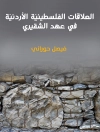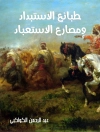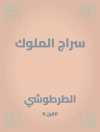This book critically analyses important social issues experienced in Australia, such as economic inequality, precarious work, unequal access to quality education and health care, housing insecurity, colonisation, racism and discrimination, activism and social change. In doing so, it contributes to urgent discussions in key areas of Australian society. At a moment in time where a more progressive, caring, inclusive and optimistic public discourse is required, this book takes up the challenge of thinking constructively and creatively about the possibilities for change. While the book focuses on Australian-specific experiences, connections to international examples are made to ensure this work has relevance to people beyond an Australian context.
Innehållsförteckning
Part I: Introduction.- Chapter 1: Introduction: Challenges and opportunities for Australian society.- Part II: Identities and Imaginaries: Values, place and power in ‘mainstream’ Australia.- Chapter 2: Australian identity: Multiculturalism, ‘mainstream Australia’ and white fragility.- Chapter 3: The beach and the Australian imaginary.- Chapter 4: ‘The Australian way of life’: Neoliberal hegemony, colonisation and territory.- Part III: Constructing a business-friendly society: Capital, labour and the welfare state.- Chapter 5: Economic inequality and the ‘cost of living’ crisis.- Chapter 6: The evolution of precarious work in Australia: Flexibility, fragmentation and insecurity.- Chapter 7: Poverty and punishment in Australian welfare policy: From the Cashless Debit Card to Parents Next.- Part IV: From public goods to private assets: Marketising education, health care and housing.- Chapter 8: Uneven playing fields: Australian education and the commodification of opportunity.- Chapter 9: Healthy markets or health equity?: Neoliberalism and the rationing of health care in Australia.- Chapter 10: Capitalising on the housing crisis: Territorial stigmatisation, urban renewal and displacement.- Part V: Capital, place, age and race: Challenging neoliberal hegemony.- Chapter 11: The promise and peril of Digital Agriculture: ‘Unleashing’ the value of natural capital?.- Chapter 12: Rebellion, civil disobedience and repression: Young people, place and protest in Australia.- Chapter 13: Racism and resistance: African Australian challenges to spatial management practices in Australian institutions.- Part VI: Conclusion.- Chapter 14: Conclusion: What has happened, what can happen?.
Om författaren
Patrick O’Keeffe is a Senior Lecturer in the School of Global, Urban and Social Studies at RMIT University. He teaches and writes in multidisciplinary fields including political and rural sociology, critical human geography, and political economy. He is interested in how processes of marketisation, privatisation and financialisation shape and affect the lives of young people in Australia. Further, Patrick’s research has explored ways that critical and inclusive approaches to design can be applied when working with communities who have experienced the marginalising impacts of racism and inequality.












